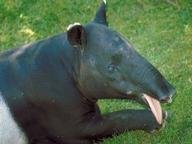Quiz Answer Key and Fun Facts
1. Which of these species can be found in Africa?
2. What is another name for the tree pangolin?
3. Which of these is called the common pangolin?
4. What is the word "pangolin" derived from?
5. Ground-dwelling pangolins have a special way of cleaning themselves. What creature is an important part of their hygiene?
6. Which of these is not true about a pangolin's behavior?
7. Which acid do pangolins obtain from their diet that is very important for digestion?
8. The most important life function of a pangolin is, of course, reproduction. What is the basic range of time in which baby pangolins are born?
9. Pangolin scales are valuable for different reasons and therefore have several uses. Which of these is not one of their uses?
10. Pangolins are classified in Kingdom Animalia, Phylum Chordata, Subphylum Vertebrata, Class Mammalia, but which order?
Source: Author
Elbereth7
This quiz was reviewed by FunTrivia editor
crisw before going online.
Any errors found in FunTrivia content are routinely corrected through our feedback system.

